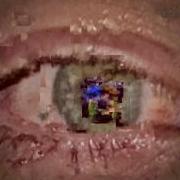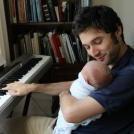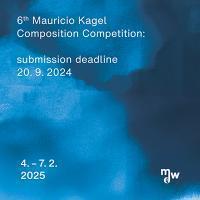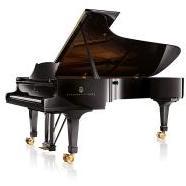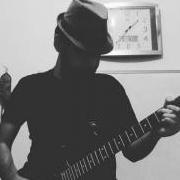Search the Community
Showing results for tags 'piano'.
-
My first ever completed composition from March 2017.
-
Hey everyone! I've been recently posting some of my piano pieces from my new album and this is yet another one of them. It's actually a very old musical idea of mine, I think it was one of my first piano pieces, but it seemed unfinished so I made some changes and additions to the original and the result is here. Feel free to let me know how you like it! If anyone's interested, you can listen/buy the full album here 💿https://oliverbohovic.bandcamp.com/album/ballerina💿 Or here 📀http://store.cdbaby.com/cd/olivernosaczynskibohovic📀
-
- piano
- contemporary
-
(and 2 more)
Tagged with:
-
Hi, I'm a classical trained piano player. However, since I listened to Yiruma's piano music, I was inspired to start my own composition :) My friend commented that this composition, After Rain, is like "Bach Meets Yiruma" piece since overall it has classical vibe but towards the end it goes emotional. Here is the link: https://m.youtube.com/watch?v=AijLtevhAwM Let me know what you think. All opinions and feedback are really appreciated! Thanks a lot!
-
This is an exercise about subjects I'm studying now. While the winter comes... Reported Speech Partitura completa.pdf
-
Quiquern Part One: The People of the Elder Ice One of my favorite short stories of all time is “Quiquern” by Rudyard Kipling, from The Second Jungle Book. If you’ve never read the two Jungle Books, I highly recommend them. The Disney film only scratches a tiny surface compared to the epic stories by Kipling (Mowgli’s story is really only the first of like 20 stories). The writing is so crisp, and these stories do what all great sci-fi and fantasy stories do: they create an entire fully-formed world for the reader to explore. The world is rich and complex, and the lessons it teaches are piercing and difficult to shake. The Disney film is fun and jazzy and hip and carefree; the written stories are raw and wild, filled with the brutal poetry of the jungle. The characters are bound by the laws of the jungle, the unwritten rules and shared understandings that guide every action the animals take. The laws dictate how to behave in times of drought, when and where hunting is permitted, and how to interact with the ever-expanding, dangerous world of Men. Only Mowgli is unbound by the laws of the jungle. Therefore he rules the jungle. Mowgli = boss There are also so many hidden messages and deeper meanings packed into Kipling’s verse. Every story begins and ends with poems, the meanings of which change after reading each story. For example, this one: The night we felt the earth would move We stole and plucked him by the hand, Because we loved him with the love That knows but cannot understand. And when the roaring hillside broke, And all our world fell down in rain, We saved him, we the Little Folk; But lo! he does not come again! Mourn now, we saved him for the sake Of such poor love as wild ones may. Mourn you! Our brother will not wake, And his own kind drive us away! At first reading, it is a nice little poem. But after reading the story that follows it, “The Miracle Of Purun Bhagat,” the poem becomes so tragic and beautiful. Every story has these lovely little nuggets, and they make the reading experience so rich. “Quiquern” is the story of a young Eskimo boy who lives in a tiny village surrounded by a frozen arctic wasteland. The village’s only source of food is seal meat which they catch with the help of their many well-trained dogs. One particular dog is born a runt, shrunken and sickly in the freezing wind. However the young boy cares for the dog, and raises him as a member of his own family. His love for the dog is pure and innocent, and together they frolic in the snow like siblings. One year the winter is especially harsh, and the ice does not recede. The surplus seal meat runs out, and the people of the village soon begin to starve. In their moment of desperation they eat the wax from their candles, the leather from their belts. Their beloved sled dogs, still chained together in groups of eight, insane with hunger and fearing for their lives (just as lion cubs must fear their mother in times of hunger) break their chains and run screaming into the white waste. The people of the village become living skeletons. The boy and a young girl from the village, still strong in their youth, announce to the village that they will venture out into the ice storm and find food for the village. It is suicide, but nobody stops them. Within days of their departure they are hopelessly lost, freezing, and beginning to hallucinate. They kneel shivering in the snow and announce to the heavens that they are man and wife. As darkness closes around them they pray to Quiquern, the eight-legged spider god of the arctic, for salvation and mercy. In the morning, as light slowly creeps over the white hills, the two children open their eyes to see a massive creature barreling toward them in the distance, eight legs scurrying effortlessly across the snow. A giant, hulking body becomes larger and larger in the morning haze. Quiquern has arrived to devour them; they are helpless as newborn seals. It is the end of their short lives, the end of their people. Two freezing, starving children prepare to die alone on a frozen plain at the edge of the world. However as their eyes focus, they soon realize that the eight-legged creature is actually eight dogs, running wildly through the snow pulling an empty dogsled. The dogs are well-fed and excited, blood dripping from their snouts. At the front of the pack is the runty dog the young boy once saved, frothing with joy at the sight of his oldest friend. Carried by the sled dogs, the two Eskimos travel for miles to an open pit in the ice, where fat seals emerge for air. The dogs had found the hole in the ice and gorged themselves on meat. The boy and his wife fill the sled with food and return to the village as heroes. The village, now inhabited only by ghost-like creatures with sunken eyes, celebrates by burning whatever candles they have left. An ancient people go on. This story burrowed down inside me and left its mark on my soul. I’m not sure why, I can’t explain it, but it filled me with the urge to write music. Originally I set out to write something eerie and cold and empty, three flutes crying out across the Arctic plain. But as I wrote, I realized it needed some bass, so I worked a piano into the mix. Years later, I switched out a flute for a clarinet to give it one more color, and that ensemble is the one that remains. I’ve always loved my piece, Quiquern, just as I’ve always loved the story Quiquern. I can’t exactly say what it is that draws me to both, but drawn I am. Over the years I’ve written notes about this music in the margins of my journal: “Don’t forget, you love Quiquern. Don’t discard it.” Quiquern Part Two: The Dog Sickness The second movement is called “The Dog Sickness”. I thought “Quiquern” was complete years ago. Time and again I would declare it officially finished. But then, months later, something just wouldn’t sit right with me. I’d pry it open again and tinker with its innards. Maybe it will never be done. Maybe I’m destined to dance with this score til the end of my days. Don’t get me wrong, I have always loved this music. Every time I pick it up again, I’m reminded of why I have such a sweet spot in my heart for “Quiquern”. It evokes so many positive memories: of writing it over Christmas break in San Diego, of reading The Jungle Book over and over, of experimenting with new sounds (new to me anyways), of unhinging my creativity from purely classical harmonies and letting go a bit. Like this sort of thing: I never go full atonal, I’m always chained in some way to classical forms and progressions, but this piece freed me up in some ways I had never tried. I went wandering a bit through the cold wilderness. I let the images in my mind solidify into a color palette. I focused on the story the sounds told, rather than fussing about the progression. This allowed me to express all the pain I felt after reading that beautiful, heart-breaking story. A forgotten people, starving alone at the edge of the world. So why, if this music was so compelling, couldn’t I call it “complete”? Well there were a few reasons. One is I just wasn’t thinking about form when I first wrote it. I was in “crank it out” mode, writing down whatever ideas popped into my head. I tried to free up my creative process and stop self-editing as I wrote. As a result, the music flowed pretty freely out of my brain, and the harmonies were weirder than I was used to. The musical nuggets that emerged were captivating and exotic. But there was no overarching shape to the piece. It was just idea after idea, with very little connectivity. Throwing a bunch of nuggets into a pile don’t make it a whole chicken. This time around I wanted to work on that. This is the sort of pre-thought that Schoenberg went on about. In other words, real composers think about form and structure BEFORE writing, they don’t just wander around in the dark hoping to bump into a complete form. When I put some thought into this piece, I was able to picture the arc that I wanted to create with the music. A chaotic, hallucinogenic dream sequence, sandwiched on either side by a poignant but solitary theme calling out in the dead stillness of the ice-fields. Perhaps the middle is what the dogs feel as they begin to starve, giddy and terrified and angry; the beginning is what the Inuits feel watching their beloved animals suffer in the dark, knowing what awaits them if another source of food is not found soon. “What is it?” said Kotuko; for he was beginning to be afraid. “The sickness,” Kadlu answered. “It is the dog sickness.” The dog lifted his nose and howled and howled again. “I have not seen this before. What will he do?” said Kotuko. Kadlu shrugged one shoulder a little, and crossed the hut for his short stabbing-harpoon. The big dog looked at him, howled again, and slunk away down the passage, while the other dogs drew aside right and left to give him ample room. When he was out on the snow he barked furiously, as though on the trail of a musk-ox, and, barking and leaping and frisking, passed out of sight. His trouble was not hydrophobia, but simple, plain madness. The cold and the hunger, and, above all, the dark, had turned his head; and when the terrible dog-sickness once shows itself in a team, it spreads like wild-fire. Next hunting-day another dog sickened, and was killed then and there by Kotuko as he bit and struggled among the traces. Then the black second dog, who had been the leader in the old days, suddenly gave tongue on an imaginary reindeer-track, and when they slipped him from the pitu he flew at the throat of an ice-cliff, and ran away as his leader had done, his harness on his back. After that no one would take the dogs out again. They needed them for something else, and the dogs knew it; and though they were tied down and fed by hand, their eyes were full of despair and fear. To make things worse, the old women began to tell ghost-tales, and to say that they had met the spirits of the dead hunters lost that autumn, who prophesied all sorts of horrible things. Prayers to a cruel and fickle ice god. Now the music told a story. And while I was working on form, I also put more thought into motifs. This piece has a lot of rich material, maybe even too much. Though I love that there are so many fun ideas in there, sometimes it plays like one of those Beatles songs with too many good ideas but no development. This time around I went through the piece with a needle and thread, and wove my favorite motifs into the very fabric of the piece. In and out they come, appearing and disappearing again, becoming more recognizable with each appearance. Just as a chef might pour a bit of the boiling gnocchi water into the sauce to bind all the flavors together, my goal was to bind all the ingredients of this music together into something coherent (and tasty). Like this motif, which appears everywhere: Or this rhythmic motif: Just because Beethoven used it in his fifth symphony, doesn’t mean it’s off-limits forever. There was something else fundamental that needed retooling: instrumentation. Originally I chose three flutes and piano for this piece, because the flutes evoked the lonely, frozen tundra. But as I was writing, I didn’t pay enough attention to the limitations of the flute. I wasn’t writing in an idiosyncratic way, I was just cranking out music. The used a lot of low C’s on the flute because I liked the sound, but I knew the notes were ringing out stronger in my head than they would on a real instrument, where that low C is easily covered up and lost in the mist. I considered an alto flute, but decided a clarinet would give me a whole other palette to play with. When on phases in a new instrument like this, one can’t just paste the flute part into a clarinet staff and call it done. The addition of the clarinet changed the whole character of the piece. While the flute is cold and isolated and graceful and metallic, the clarinet is like warm baking bread. It’s also intense, frenetic, a bit insane at times, with low earthy tones that can feel angry or foreboding or subdued. That new voice greatly expanded the range of the piece, so I was able to open the music up a bit and let it breathe. All these forces combined into something much different than the piece I’ve been kicking around all these years. This version feels like a completed piece of art. It’s not just a sketchbook of ideas, it’s a story arc with real meaning. In other words it really does feel done. For real this time. Seriously. Now I have the final movement to think about, but I might just put this piece down for a while, maybe a year or two. I want to orchestrate something!
-
Mauricio Kagel Composition Competition http://www.mauricio-kagel-composition-competition.com Considering the relative overabundance of piano literature, it would be seemingly foolhardy to stage a composition competition promoting the creation of new pieces for piano. Everything appears to exist already, even pieces for children and young adults. Still, far too frequently it is precisely this contemporary „educational literature“ which proves lacking in artistic qualities; accompanying a reduction in technical difficulty, with an objectionable reduction in the notion of what children and young adults are capable of understanding – both intellectually and emotionally. We are looking for piano pieces written for children and young adults which, although limited in their technical difficulty, remain uncompromising in their artistic aim; pieces written with a contemporary compositional technique which offer the young student stimulus, insight and new experiences: experiences about oneself and the world in which we live. With the creation of this competition, the Ludwig van Beethoven Department of Piano and Harpsichord in Music Education would like to ensure that such quality pieces are more prevalent in the future and to this end we invite composers to accept the challenge by enrolling in the competition. In the course of a week’s time an audience comprised of students, teachers, and performing artists will be given the chance to listen as the jury evaluates the different ways this challenge has been addressed by the composers. The jury will assess not only the artistic quality of the pieces, but also the question: what does a piano student learn from these pieces? And in addition the discussion will cover what makes a piece exciting and what is future-oriented; while at the same time never loosing sight of the technical limits implied when composing for children and young adults. The decision of the Jury to award the prizes within the course of the Maurico Kagel composition competition is reached, therefore, in a very special way – not behind closed doors, but in open and public discussion. The winning pieces will be technically suitable for children/young adults but will not compromise their artistic aim in order to make a pedagogical impact. Instead, they will be convincing due to their compositional quality. General Conditions Conditions for Participation a) The competition is open to all composers born after August 15th, 1978. Participants who were awarded prizes in 2010, 2013 and 2016 are no longer eligible to enter. b) The submitted score should be composed for this competition. The composition must not be older than three years and should not have been performed privately or publicly, copied, distributed, broadcasted or made accessible on the internet. c) Each composer may submit only one score in its entirety and not in part. Details of the composition The composition should be written for one piano (solo or for more than one pianist), and can include all facets of the instrument. It is of great importance that the pieces be appropriate in their level of difficulty for children / young adults and be suitable for pedagogical use. Therefore the pianistic difficulties and musical challenges should be conceived with children / young adults in mind. The score is expected to be comprehensible and clear. Instructions for performance must be written in German or English. The piece or group of pieces is expected to have a total length of between 6 and 15 minutes. Applications a) The participants are to send an envelope marked on the outside with a freely chosen five-digit code which will secure the anonymity of the participant. The envelope should contain: 1. six copies of the piano score - each annotated with the same five-digit code. The composer's name should not appear on the score 2. an additional sealed envelope marked with the same code and containing the composer's personal data, a short curriculum vitae and two recent photos. b) All entries must be postmarked no later than August 15th, 2018 and should be addressed to: Universität für Musik und darstellende Kunst Wien Ludwig van Beethoven Institut für Klavier und Cembalo in der Musikpädagogik Rennweg 8 1030 Wien Österreich Jury Michael Jarrell Isabel Mundry Robert HP Platz Rebecca Saunders Marco Stroppa • From the entries received, each jury member will nominate several pieces to be included in the Vienna Days of Contemporary Piano Music 2019 (February 4th - 7th, 2019), openly discussed by the jurors and considered for a prize. • The presentation of the prizes will take place on the 7th of February, 2019 during the Vienna Days of Contemporary Piano Music 2019. • The organizers reserve the right to find replacement jury members as seen necessary. • The jury is free in its decision making. All decisions of the jury are final and indisputable. There can be no appeal against the jury’s judgement. Prizes 1st Prize € 5.000.- 2nd Prize € 3.000.- 3rd Prize € 2.000.- The jury may decide to divide the prizes or not to award a prize. Winning scores will be published together in a volume entitled K2019. Additionally, the jury may create a list of recommended pieces. The Ludwig van Beethoven Department of Piano and Harpsichord in Music Education will release digital recordings of the prize winning pieces and selected recommendations from the jury. Legal Information Scores received cannot be returned. The organizers of the competition cannot be held responsible for post which arrives damaged, goes astray or is delivered late. Registration for the competition and the submission of scores implies the unconditional acceptance of all conditions set forth herein. The composers of the submitted scores retain their rights as copyright holders. The Ludwig van Beethoven Department of Piano and Harpsichord in Music Education retains the right to visually and acoustically document, record and reproduce all concerts, performances and presentations held during the course of the competition and the subsequent Vienna Days of Contemporary Piano Music for the purpose of advertising the competition. The musical works enshrined in those sound and/or audiovisual recordings may be copied, distributed, performed, combined with other kinds of works, broadcasted and made available to the public free of charge without limitation to time, space or scope, as long as those recordings are used for non-commercial purposes. In case the author is represented by a collective management society, she or he has to see to the formalities according to the applicable rules of the respective societies in order to be able to grant a licence for non-commercial purposes prior to the recording. This licence is transmissible to third persons. In case of an intended use for commercial ends, the rightsholder has to grant the respective permission. Litigation is excluded as a possibility for settling disputes arising in connection with the competition. http://www.mauricio-kagel-composition-competition.com
-
Hi Guys! This is my first post. I would love to hear your opinions on my take on: The Rains of Castamere, the most epic song from Game of Thrones.
- 1 reply
-
- 1
-

-
- game of thrones
- ramin djawadi
-
(and 8 more)
Tagged with:
-
This a short piece I recently finished after digging up an old theme. As the name implies, it is strongly influenced by Schubert's famous Moment Musical in F minor as well and is structured similarly though I wonder if it is too influenced by the Schubert's work. I kind of got lazy with the ending, I hope to come up with a better one. Score is attached but as always, is a little rough.
-
Hello! I'm new to these forums but it looks like my kind of place! I just wrote a new piece for piano called, "Happy Days", and would love some feedback. I have had very little formal training, just a theory class back in high school. I learned from my grandparents and self-study. This is supposed to mimic the style of one of my favorite composers, Jon Schmidt, but mainly it's supposed to sound happy. I have some other pieces on my YouTube page if you want to hear more! Thanks! Video Link: Sheet Music Link: https://musescore.com/user/26861998/scores/4800085
-
Hi guys just released my Prelude in E for piano. Here's the preview. Whadyal think.. https://www.youtube.com/watch?v=Kcy1oE4PD7Y&feature=youtu.be
-
A simple piano piece called Lit in Darkness with an animated score. Let me know your thoughts. Thanks!
-
A very short piece (I'm wondering if I could make it longer) for Violin, French Horn and Piano.
- 3 replies
-
- 1
-

-
- violin
- french horn
-
(and 1 more)
Tagged with:
-
I'm a bit lost with this one. It needs work i know, i'm just not sure where to take it once I've brought the main theme back in around 3:45, carry on building it up bigger? Strip it right back? Any ideas on instrumentation etc very welcome...
-
Think snow, vast, white-covered meadows of snow ...
-
Hello everyone, So I tried to catch the peacefull, but at the sime time sad/ not quite right aura of Hiroshima, and played around with tempo and arpeggios. I'm fairly new to composing so feel free to give any kind of advice, critics or comments. Enjoy
-
I just composed this piece, when I was too tired at work. So, I decided to complete it before leaving the office. I really like it, because it has a sense of depression and sadness, hidden in different layers of sounds (Jungle ambient, industrial drone, piano & drums, flutes...)
-
A couple of friends asked me to combine the choral harmonization that one had created with a bass solo section for the other to sing and add an accompaniment for "O Holy Night." Here's what I came up with. I don't usually do arrangements, but it was kind of fun to have an assignment: use these choral parts, use this solo, put it all in this key, I like the accompaniment from this other arrangement, can you do something like that? But fancier? It feels a little plain... Hopefully to be sung at a couple of Christmas concerts by the group that the choral parts harmonizer guy directs and the other guy is doing the solo. (: Oh Holy Night.mid
-
Hey everyone! Can you please check out my new composition? Sheet music still needs some clean up, adding letters etc. What I'm most concerned about is piano part. What do you think about it? Also, maybe there is someone who would like to test this out? Any feedback appreciated! Thank you!
-
I'd love to get your feedback. This is like a sweet lullaby, but with contemporary sounds and melody.
- 4 replies
-
- 1
-

-
- piano
- solo piano
-
(and 2 more)
Tagged with:
-
Hey everyone! This piece is something unusual to me, as I was always writing my original music, but this time I made a re-make of a 80's pop song which was a major hit in Slovak radios back then. I have been asked by the artist himself-Peter Nagy, to do a different version, something in the romantic/movie piano style of my other compositions from the album that I gifted to him, and so I gladly agreed and here's the result. You can also listen to the original 80's version by Peter Nagy here. On the top there's the original version and down below there's my version. I hope you'll like it! P.S. my version is also included on my debut piano album which you can listen to or buy here https://oliverbohovic.bandcamp.com/album/ballerina
-
- contemporary
- classical
-
(and 4 more)
Tagged with:
-
Hi I'm writing a series of short pieces as examples for several entires I'm doing in a blog about all the ways of modulation (as far as I know). And there are many... In this one, I use enharmonic modulation by French augmented sixth, and by augmented triads (bIII+) in minor modes. So, I have to stay tonal for a while I made a video, too. not so happy - SCORE.pdf
-
A short piano piece. Finished 26 August 2017 Also terrible GarageBand midi sounds
- 3 replies
-
- 1
-

-
- piano solo
- mediocre
-
(and 1 more)
Tagged with:

